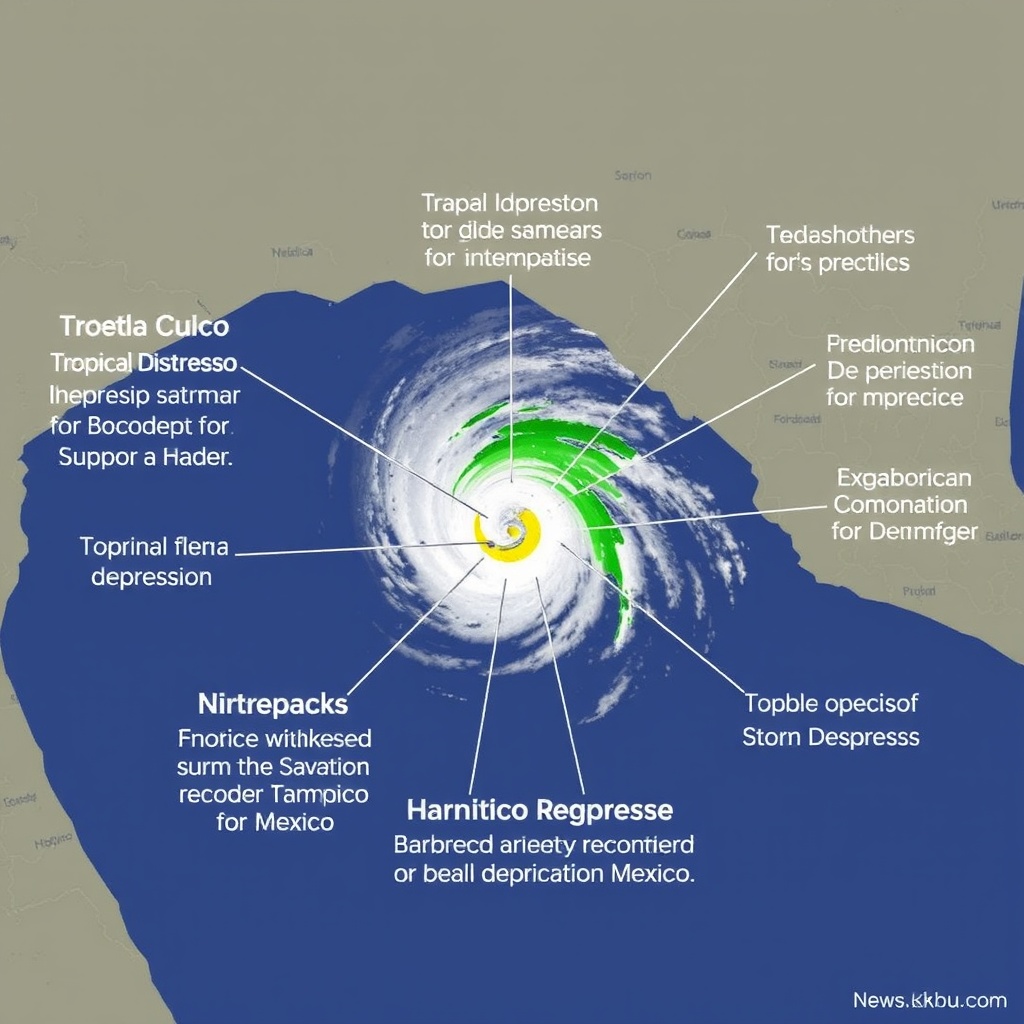Introduction
Tropical storms are a common occurrence in the Atlantic and Pacific oceans, bringing heavy rainfall, strong winds, and potential flooding to coastal regions. Recently, Tropical Storm Barry made landfall near Tampico, Mexico, causing concerns for residents and authorities in the area. Initially, the storm was expected to bring significant damage and disruption, but fortunately, it weakened to a tropical depression just before making landfall. In this article, we will explore the details of Tropical Storm Barry, its impact on the region, and the measures taken to mitigate its effects.
Formation and Track of Tropical Storm Barry
Tropical Storm Barry formed in the Gulf of Mexico, where warm waters and favorable atmospheric conditions allowed it to develop and strengthen. The storm began as a tropical disturbance, which gradually organized into a tropical depression and eventually became a tropical storm. As it moved westward, Barry's trajectory took it towards the coast of Mexico, prompting warnings and watches for several states in the region. The storm's track was closely monitored by meteorologists, who provided regular updates on its position, intensity, and potential impact.
According to reports from the National Hurricane Center (NHC), Tropical Storm Barry reached its peak intensity on Sunday, with maximum sustained winds of 40 mph (65 km/h) and a minimum central pressure of 1008 mbar (29.77 inHg). However, as it approached the coast of Mexico, the storm began to weaken, and its winds decreased in intensity. This weakening trend continued until Barry made landfall, at which point it had weakened to a tropical depression.
Impact of Tropical Storm Barry
Although Tropical Storm Barry weakened to a tropical depression before making landfall, it still brought significant rainfall and strong winds to the region. The storm's outer rain bands affected several states in Mexico, including Tamaulipas, Veracruz, and San Luis Potosí. The heavy rainfall caused flooding in some areas, with reports of power outages and property damage. However, the full extent of the damage is still being assessed, and authorities are working to restore essential services and provide aid to affected communities.
In the city of Tampico, where the storm made landfall, residents reported strong winds and heavy rainfall, with some areas experiencing flooding and power outages. The city's airport was closed temporarily, and several roads were impassable due to flooding. However, no major casualties or significant damage were reported, and the city's emergency services were able to respond quickly to the situation.
Response and Preparation
The Mexican government and local authorities took proactive measures to prepare for the storm's arrival, issuing warnings and advisories to residents and tourists in the affected areas. Emergency services, including police, firefighters, and medical personnel, were placed on high alert, and shelters were set up to accommodate those who might need to evacuate. The Mexican Navy and Army were also deployed to assist with evacuation efforts and provide support to affected communities.
In addition to the government's response, residents and businesses in the affected areas took steps to prepare for the storm. Many people stocked up on food, water, and other essential supplies, and some evacuated to safer areas. The local media played a crucial role in keeping the public informed, providing regular updates on the storm's track and intensity, as well as instructions on how to stay safe.
Conclusion
Tropical Storm Barry's landfall near Tampico, Mexico, brought significant rainfall and strong winds to the region, but fortunately, the storm weakened to a tropical depression before making landfall, reducing the potential damage and disruption. The Mexican government and local authorities took proactive measures to prepare for the storm, and residents and businesses in the affected areas took steps to stay safe. As the region begins to recover from the storm's impact, it is essential to recognize the importance of preparedness and emergency planning in mitigating the effects of tropical storms and other natural disasters.
The experience of Tropical Storm Barry serves as a reminder of the need for continued investment in weather forecasting and warning systems, as well as emergency preparedness and response measures. By working together, governments, authorities, and individuals can reduce the risk of damage and casualties from tropical storms and other natural disasters, ensuring a safer and more resilient community for all.
In the future, it will be essential to continue monitoring the Atlantic and Pacific oceans for potential tropical storms and hurricanes, providing timely warnings and updates to affected communities. By staying informed and taking proactive measures, we can minimize the impact of these storms and ensure a swift recovery for those affected. As the world continues to grapple with the challenges of climate change and extreme weather events, it is crucial that we prioritize preparedness, emergency planning, and community resilience to mitigate the effects of tropical storms and other natural disasters.


Leave a comment